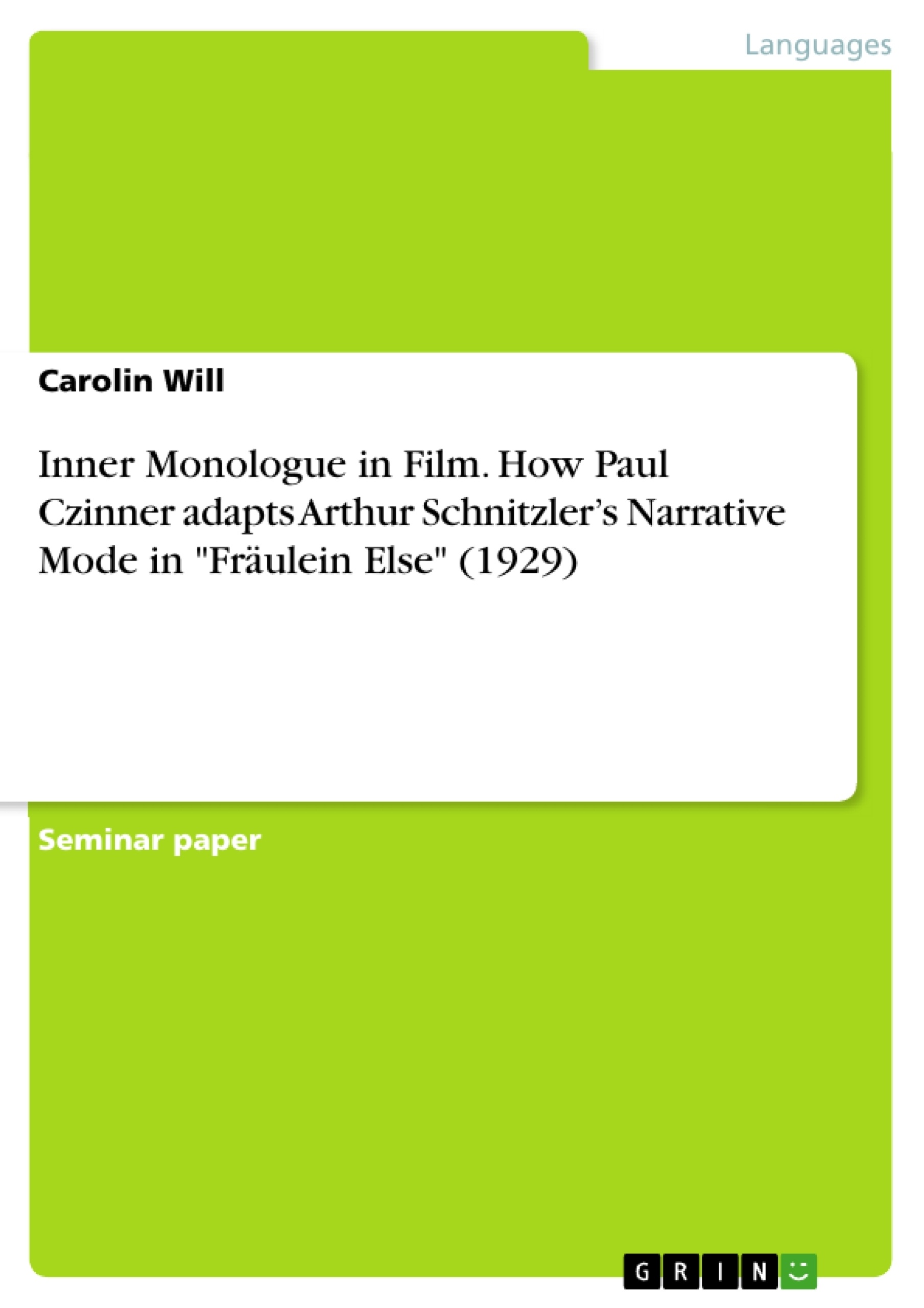This paper examines Paul Czinner’s “Fräulein Else” from 1929, both as an adaption of Arthur Schnitzler’s novella of the same name and as an individual project. The aim is to analyse how visual choices highlight the narrative and how elements of the original story are introduced into the new media.
It will therefore examine whether and how specifically the change of media is responsible for the different interpretations. The focus will be on how the medium influences the depictions of the narrative instances through visuality. This is significant for the present work as narrative instances expresses themselves, according to Kuhn, primarily on a visual and a linguistic level.
First, the difference between narrative instances in film and literature will be examined in a theoretical part. This will be based on Markus Kuhn's narrative model. Interesting approaches can be drawn from the work of Sandra Poppe’s research on film adaptations and visuality as a connecting element between adapted work and adaption. The narrative instances of novella and film will then be examined for differences and similarities. The aim is to get an overview of whether and how the special type of narrative situation in Schnitzler's work was visually incorporated into the film.
Films are an interface between writing and image in many regards. Starting from the screenplay, one can observe many functions of written text in movies. Therefore, transmediality is inherent to film. A special form of this correlation is adaption.
Film adaptions of literary work struggled to be recognized as their own art form for the longest time. The status as secondary media has been abolished by now. Under this newer perspective, it is fruitful to study criticized movies through contemporary lenses.
Inhaltsverzeichnis (Table of Contents)
- Shifting media: from literature to film
- Narrative structures in Czinner's work
- Narrative situation
- Visual narrative instance
- Linguistic narrative instance
- A small difference? Literary adaptions and their original
Zielsetzung und Themenschwerpunkte (Objectives and Key Themes)
This paper analyzes Paul Czinner's 1929 film "Fräulein Else" as both an adaptation of Arthur Schnitzler's novella and as an independent project. It examines how visual choices enhance the narrative and how elements from the original story are integrated into the new medium. The aim is to understand how the shift from literature to film affects the interpretation of the narrative.
- Transmediality in film and the challenges of adaptation
- Visual and linguistic narrative instances in film and literature
- Analysis of narrative structures in Czinner's film, especially in relation to the inner monologue in Schnitzler's novella
- Comparison of character portrayals and narrative perspectives between the novella and film
- The influence of visual choices and cinematic techniques on the interpretation of the story
Zusammenfassung der Kapitel (Chapter Summaries)
- Shifting media: from literature to film: This chapter explores the concept of transmediality in film, particularly in the context of adaptations. It examines the challenges and possibilities of translating a literary work into a visual medium. The chapter draws on Gundolf Freyermuth's theories of transmediality and highlights the unique limitations and opportunities that arise when adapting a story.
- Narrative structures in Czinner's work: This section focuses on the narrative situation in Czinner's film. It examines how the film's narrative structure differs from that of the novella. Key aspects discussed include the inner monologue, the role of perspectives, and the representation of time. The chapter analyzes how Czinner's choices affect the interpretation of the story, specifically in relation to the protagonist, Else.
- Narrative situation: This section focuses on the inner monologue and its presentation in both the novella and the film. It explores the challenges of adapting an inner monologue into a visual medium and discusses how Czinner handles this challenge. The chapter also examines the role of perspectives and the impact of multiple viewpoints on the narrative.
- Visual narrative instance: This section analyzes how visual elements in the film contribute to the narrative. It explores how Czinner uses visual choices to convey the protagonist's thoughts, feelings, and experiences. The chapter examines specific instances of visual storytelling and its role in shaping the audience's understanding of the story.
- Linguistic narrative instance: This section focuses on the use of language in the film. It analyzes how dialogue and other linguistic elements are used to convey the narrative. The chapter examines how language contributes to the characterization of the protagonists and how it influences the overall interpretation of the story.
Schlüsselwörter (Keywords)
This work focuses on transmediality, adaptation, narrative structure, visual narrative, inner monologue, visual storytelling, cinematic techniques, characterization, and perspectives. These keywords encapsulate the main themes and concepts explored in the analysis of Czinner's film "Fräulein Else."
- Citation du texte
- Carolin Will (Auteur), 2020, Inner Monologue in Film. How Paul Czinner adapts Arthur Schnitzler’s Narrative Mode in "Fräulein Else" (1929), Munich, GRIN Verlag, https://www.grin.com/document/923365



